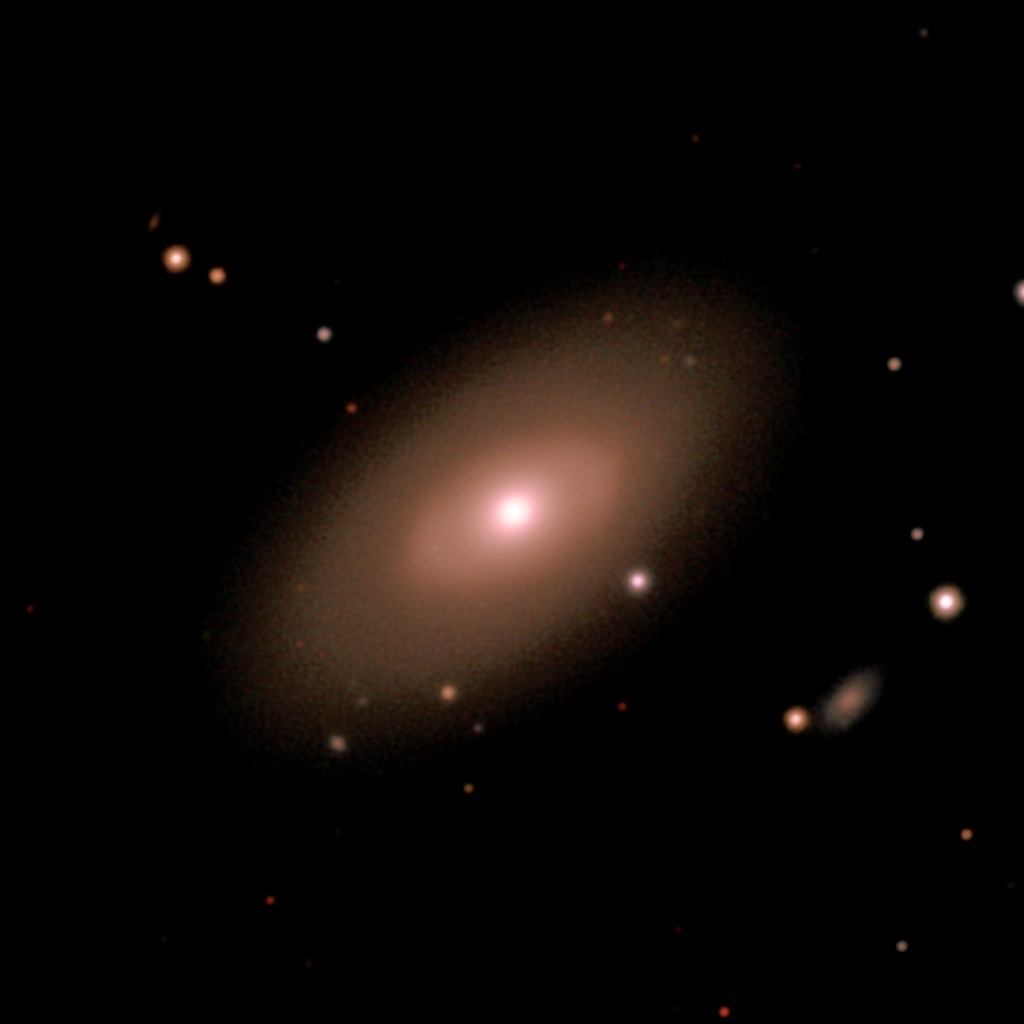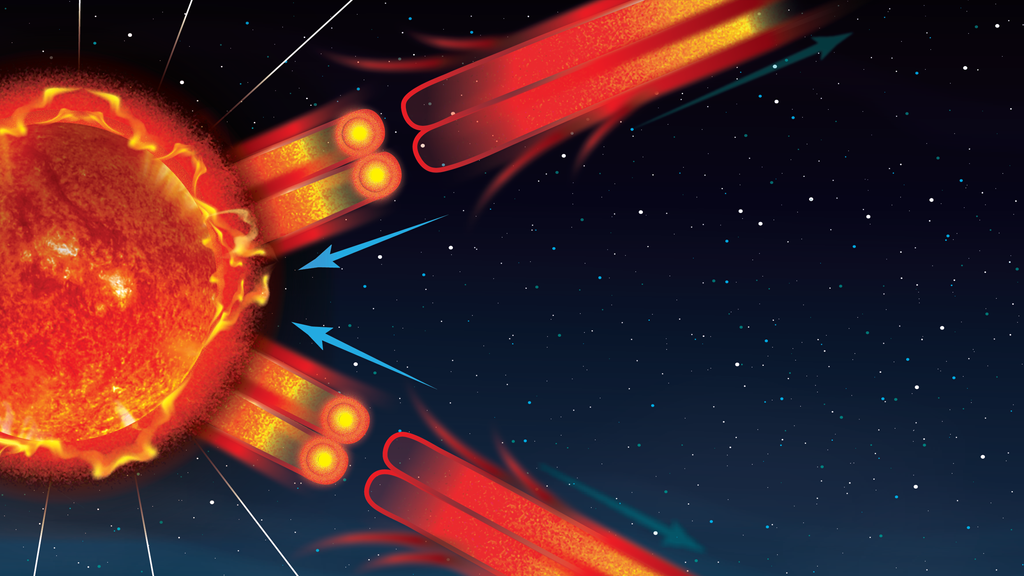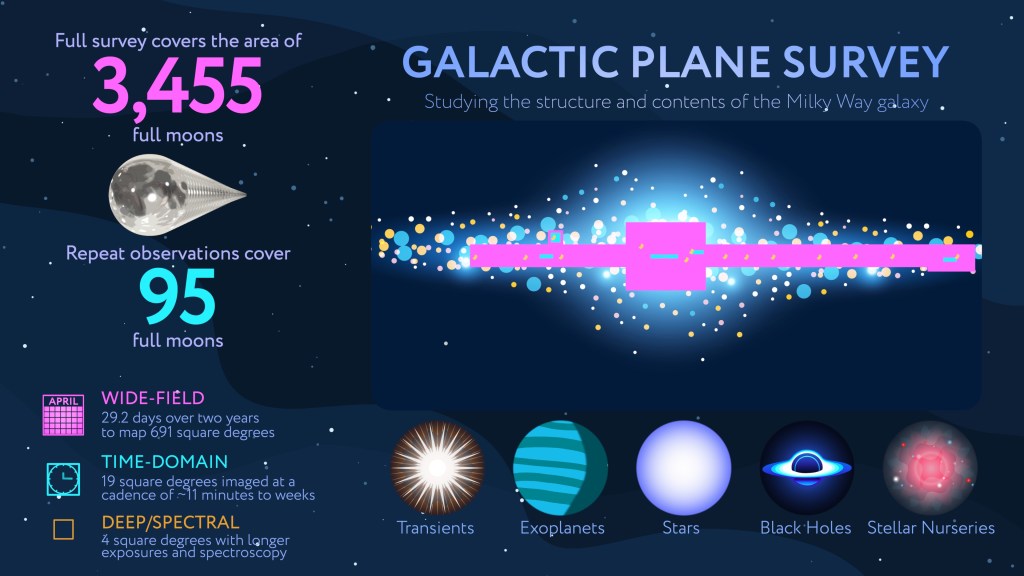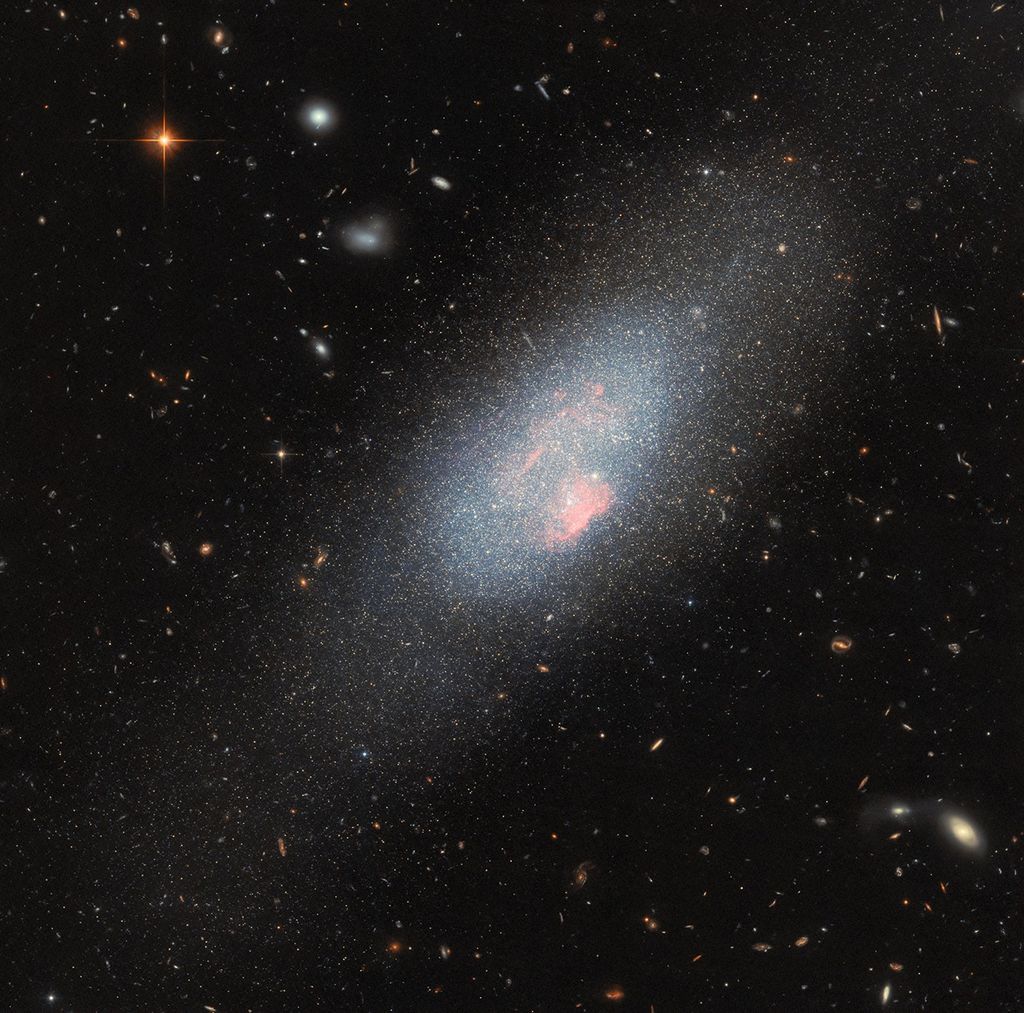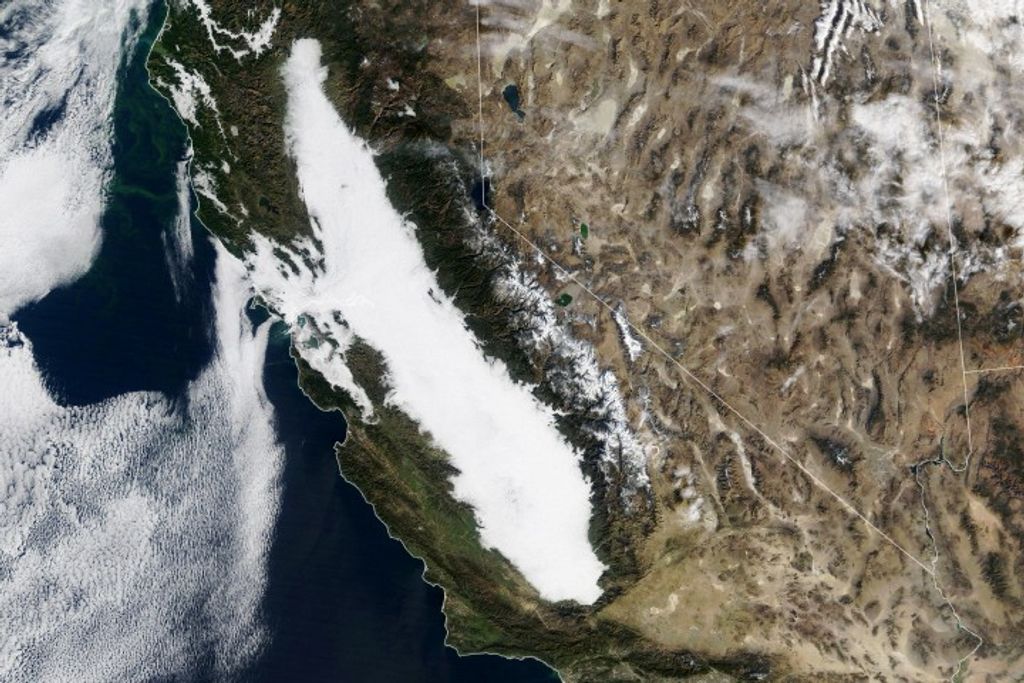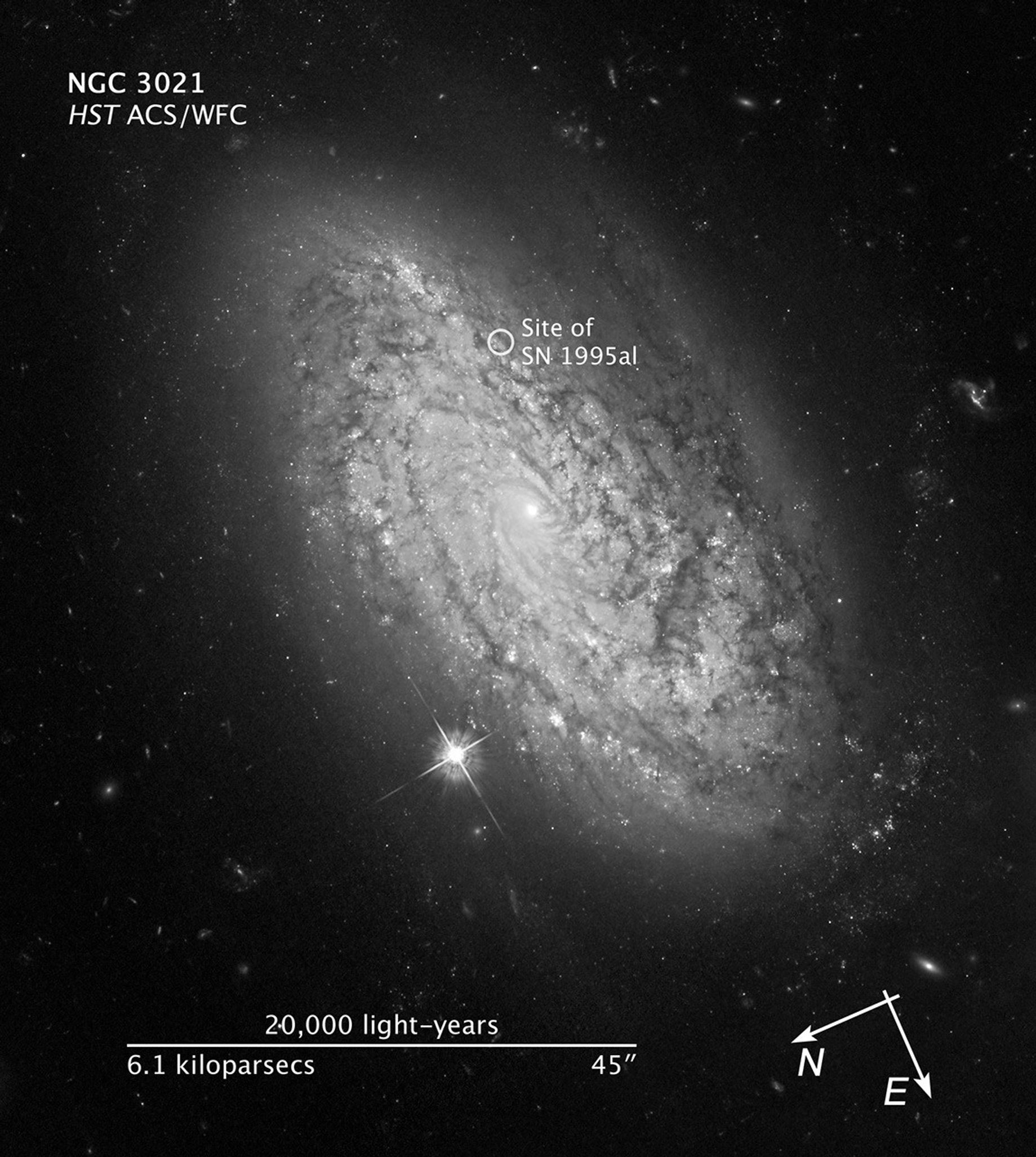1 min read
HST ACS/WFC Image of NGC 3021

About the Object
- R.A. PositionR.A. PositionRight ascension – analogous to longitude – is one component of an object's position.09h 50m 57s.13
- Dec. PositionDec. PositionDeclination – analogous to latitude – is one component of an object's position.+33° 33' 12".71
- ConstellationConstellationOne of 88 recognized regions of the celestial sphere in which the object appears.Leo Minor
- DistanceDistanceThe physical distance from Earth to the astronomical object. Distances within our solar system are usually measured in Astronomical Units (AU). Distances between stars are usually measured in light-years. Interstellar distances can also be measured in parsecs.92 million light-years (28 megaparsecs)
- DimensionsDimensionsThe physical size of the object or the apparent angle it subtends on the sky.This image is roughly 1.5 arcminutes (41,000 light-years or 12.5 kiloparsecs) wide.
About the Data
- Data DescriptionData DescriptionProposal: A description of the observations, their scientific justification, and the links to the data available in the science archive.
Science Team: The astronomers who planned the observations and analyzed the data. "PI" refers to the Principal Investigator.Data from several HST proposals were used for this science. These include: 9352, 9728, 10189, 10339, and 10802, PI: A. Riess (STScI/JHU). Data specific to observations of NGC 3021 are from HST proposals 10802 and 10497 PI: A. Riess (STScI/JHU). The science team includes: A. Riess (STScI/JHU), L. Macri (Texas A&M University), S. Casertano and M. Sosey (STScI), H. Lampeitl (STScI/University of Portsmouth, UK), H. Ferguson (STScI), A. Filippenko (University of California, Berkeley), S. Jha (Rutgers University), W. Li and R. Chornock (University of California, Berkeley), and D. Sarkar (University of California, Irvine). - InstrumentInstrumentThe science instrument used to produce the data.HST>NICMOS and HST>ACS/WFC
- Exposure DatesExposure DatesThe date(s) that the telescope made its observations and the total exposure time.November 2005 - November 2006, Exposure Time: 23.8 hours (ACS), and October 2006 - March 2007, Exposure Time: 18.4 hours (NICMOS)
- FiltersFiltersThe camera filters that were used in the science observations.ACS: F555W (V) and F814W (I) NICMOS: F160W (H-band)
- Object NameObject NameA name or catalog number that astronomers use to identify an astronomical object.NGC 3021
- Object DescriptionObject DescriptionThe type of astronomical object.Spiral Galaxy
- Release DateMay 7, 2009
- Science ReleaseRefined Hubble Constant Narrows Possible Explanations for Dark Energy
- Credit
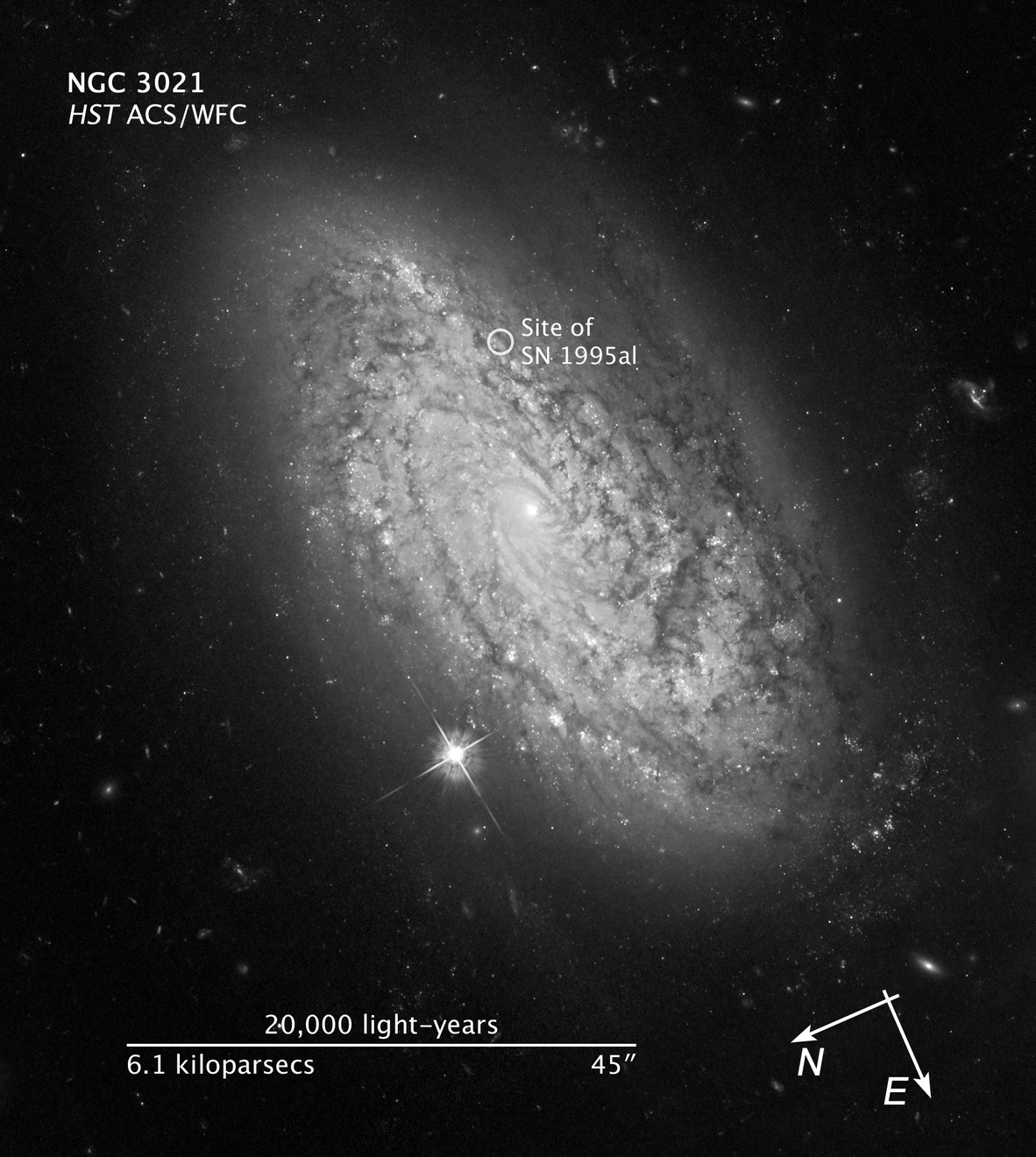
Compass and Scale
Compass and ScaleAn astronomical image with a scale that shows how large an object is on the sky, a compass that shows how the object is oriented on the sky, and the filters with which the image was made.
Related Images & Videos
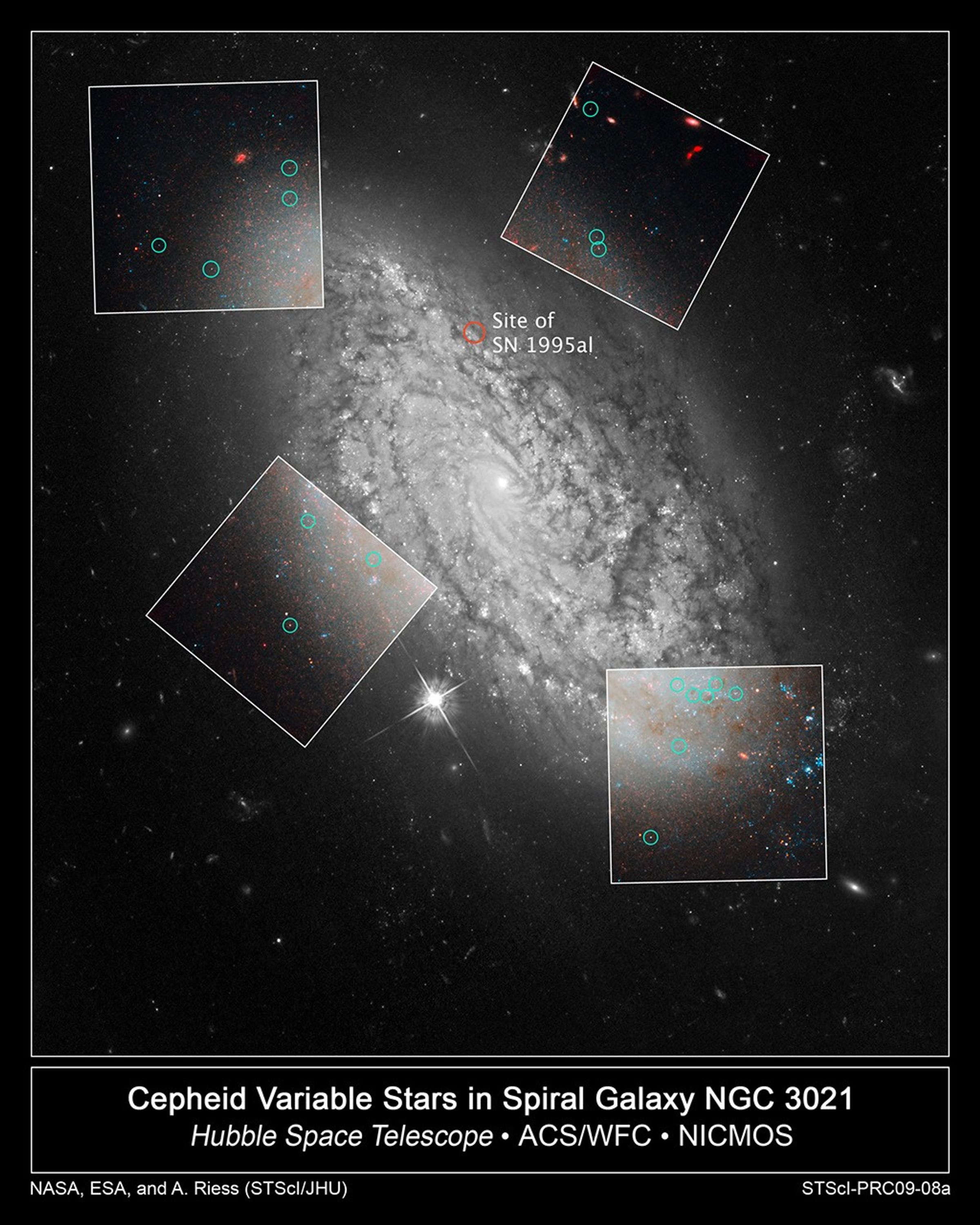
Cepheid Variable Stars in Spiral Galaxy NGC 3021
This is a Hubble Space Telescope photo of the spiral galaxy NGC 3021. This was one of several hosts of recent Type Ia supernovae observed by astronomers to refine the measure of the universe's expansion rate, called the Hubble constant. Hubble made precise measurements of...

Three Steps to the Hubble Constant
Hubble measurements have simplified the cosmic "distance ladder," which is needed to calculate a more precise value for the universe's expansion rate, called the Hubble constant. At select host galaxies, Cepheid variable stars – known as reliable milepost markers – are...
Share
Details
Last Updated
Aug 17, 2025
Contact
Media
Claire Andreoli
NASA’s Goddard Space Flight Center
Greenbelt, Maryland
claire.andreoli@nasa.gov


